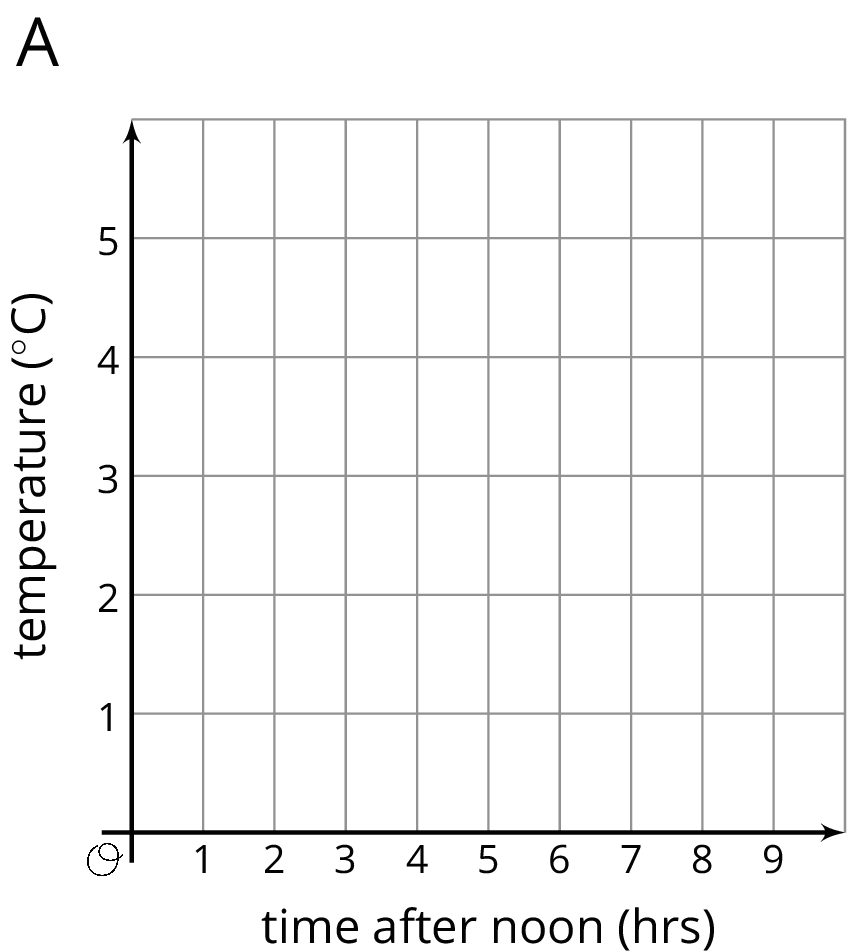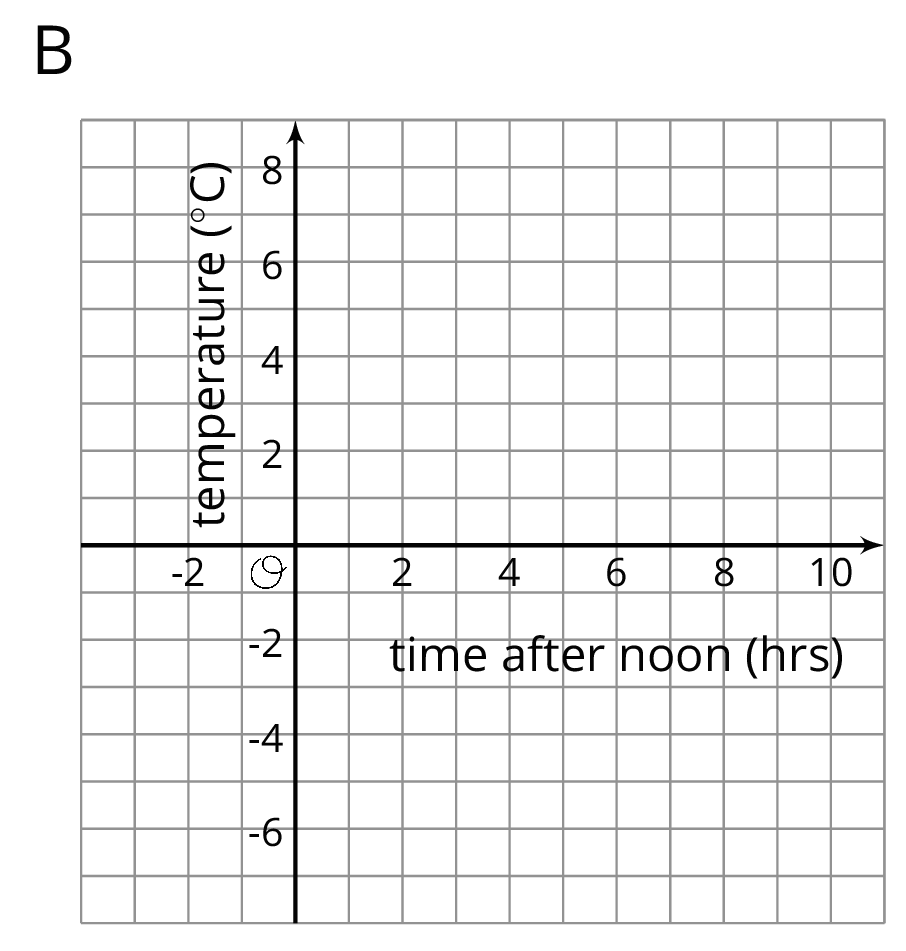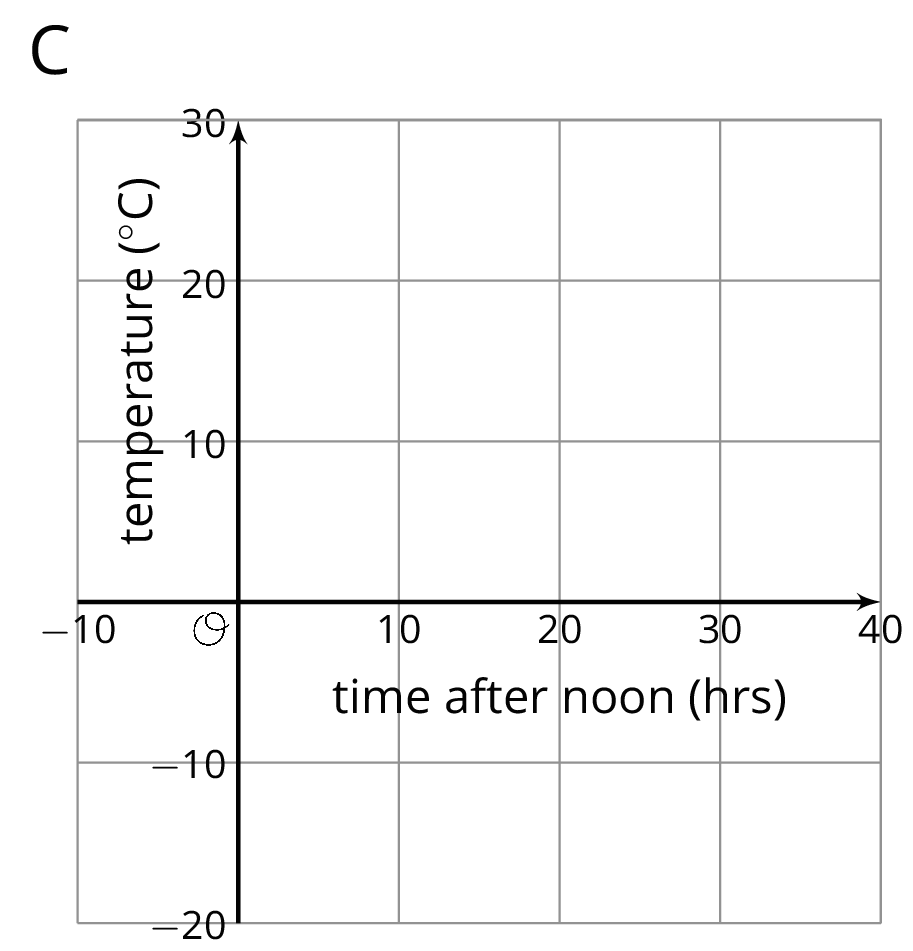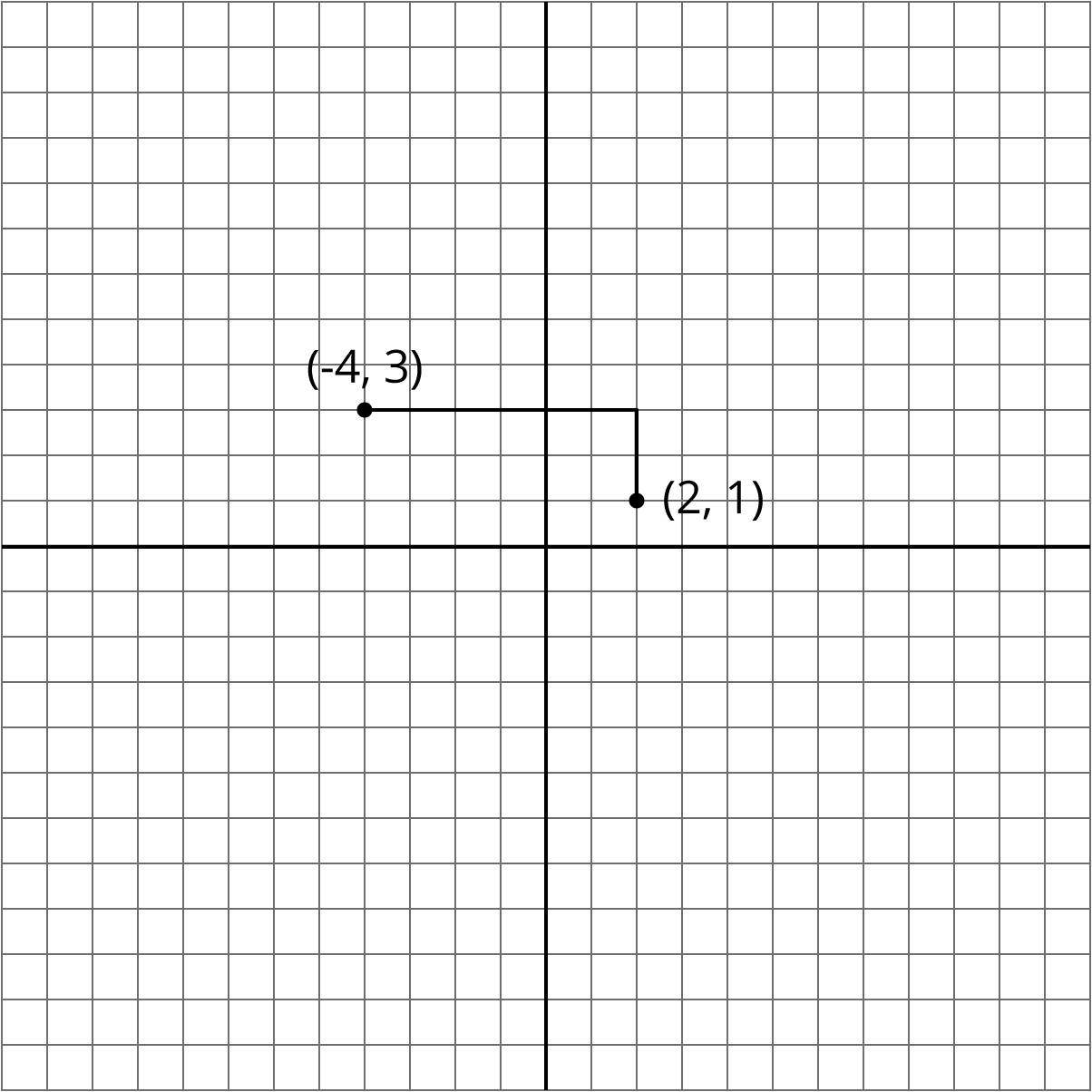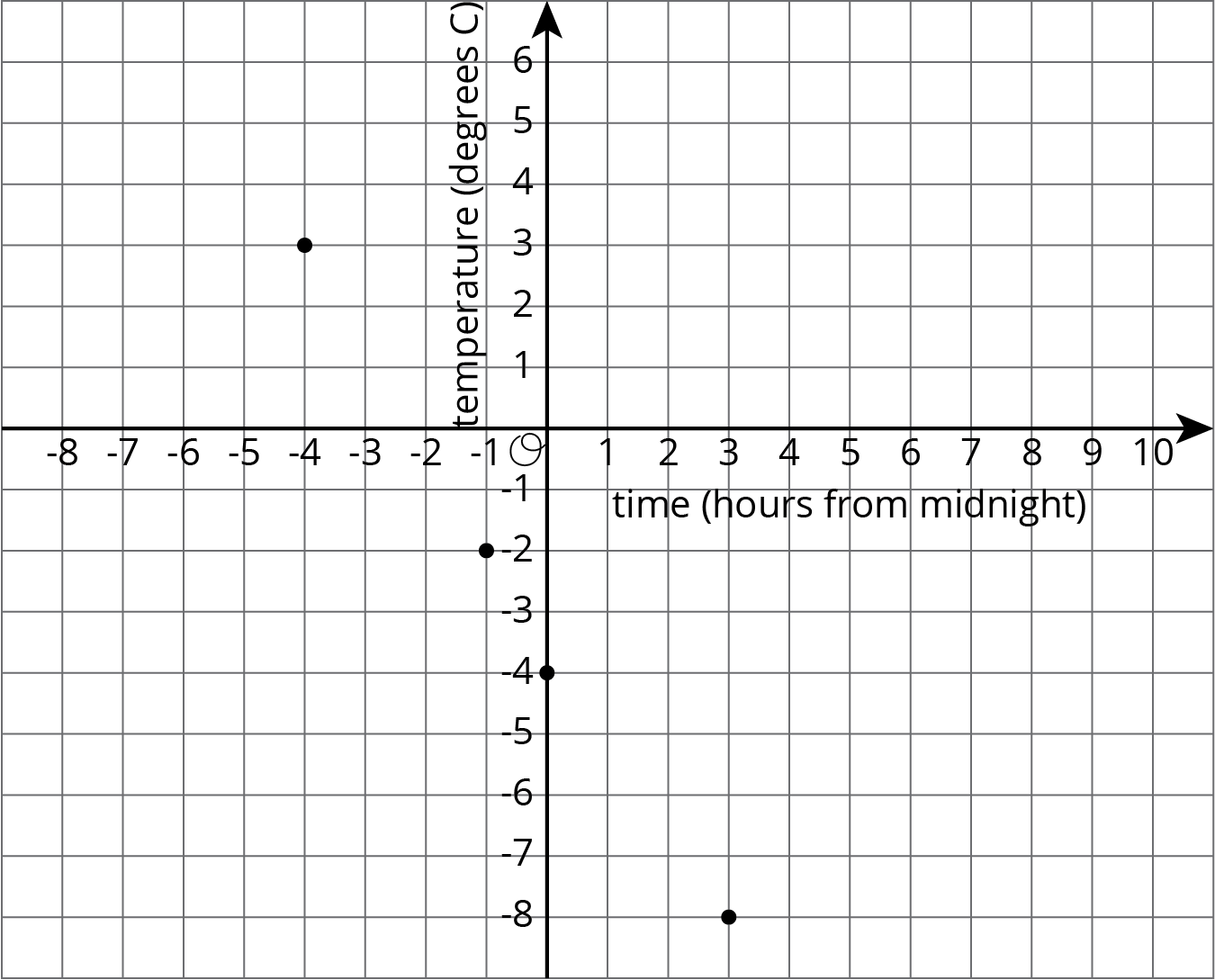The coordinate plane can be used to show information involving pairs of numbers.
When using the coordinate plane, we should pay close attention to what each axis represents and what scale each uses.
Suppose we want to plot the following data about the temperatures in Minneapolis one evening.
| |
time
(hours from midnight) |
temperature
(degrees C) |
| row 1 |
-4 |
3 |
| row 2 |
-1 |
-2 |
| row 3 |
0 |
-4 |
| row 4 |
3 |
-8 |
We can decide that the x-axis represents number of hours in relation to midnight and the y-axis represents temperatures in degrees Celsius.
- In this case, x-values less than 0 represent hours before midnight, and and x-values greater than 0 represent hours after midnight.
- On the y-axis, the values represents temperatures above and below the the freezing point of 0 degrees Celsius.
The data involve whole numbers, so it is appropriate that the each square on the grid represents a whole number.
- On the left of the origin, the x-axis needs to go as far as -4 or less (farther to the left). On the right, it needs to go to 3 or greater.
- Below the origin, the y-axis has to go as far as -8 or lower. Above the origin, it needs to go to 3 or higher.
Here is a graph of the data with the axes labeled appropriately.
On this coordinate plane, the point at (0, 0) means a temperature of 0 degrees Celsius at midnight. The point at (\text-2, 8) means a temperature of 8 degree Celsius at 2 hours before midnight (or 10 p.m.).
